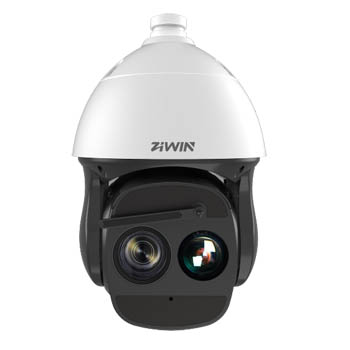
In the field of security monitoring, internal fogging in IR dome cameras is a widespread technical issue. This phenomenon not only affects image quality but can even render the device completely unusable in severe cases. When users notice blurred, hazy, or condensed water droplets in the surveillance footage, it is often due to fogging.
The internal fogging in infrared dome cameras primarily stems from the following physical factors:
1. Condensation due to temperature changes: Infrared lamps generate significant heat during operation, and when they turn off, the rapid temperature drop causes moisture in the internal air to condense.
2. Poor sealing: Inadequate sealing at housing seams, cable entry points, and other areas allows external humid air to seep in.
3. Material permeability: Certain rubber and plastic components are inherently permeable, leading to moisture infiltration over time.
4. Internal air convection: The flow of hot and cold air inside the device accelerates moisture migration and condensation.
Most security companies on the market adopt the following methods to address fogging issues:
1. Physical Desiccant Solution
· Method: Place silica gel or other desiccants inside the dome camera.
· Advantages: Low cost, initially effective.
· Disadvantages: Desiccants saturate and lose effectiveness, requiring regular replacement and increasing maintenance costs.
2. Basic Heating Devices
· Method: Install low-power heating pads or resistance wires.
· Advantages: Moderately raises internal temperature.
· Disadvantages: Imprecise temperature control, high energy consumption, and potential local overheating.
3. Passive Ventilation Design
· Method: Design ventilation holes to promote airflow.
· Advantages: Simple structure, low cost.
· Disadvantages: Unable to prevent moisture ingress, ineffective in humid environments.
4. Basic Sealing Techniques
· Method: Use ordinary rubber gaskets and sealants.
· Advantages: Short-term moisture resistance is acceptable.
· Disadvantages: Materials degrade over time, leading to reduced sealing performance.
To address the common industry challenges, our company has developed a comprehensive anti-fogging technology system:
1. Advanced Sealing Technology
· Aerospace-grade sealing materials and processes.
· Multi-layer sealing structure design.
· Specially treated cable interfaces.
2. Intelligent Temperature Control System
· Built-in high-precision heaters: Evenly heat critical optical components.
· High-efficiency cooling fans: Intelligently regulate internal airflow.
· Thermostatic control system: Maintains internal temperature above the dew point.
· Adaptive power adjustment: Automatically adjusts based on environmental temperature and humidity.
3. Material Science and Structural Innovations
· Use of low-permeability specialty materials.
· Optimized internal airflow design.
· Anti-corrosion treatment for key components.
· Modular moisture-proof design.
Our infrared dome cameras achieve the following through these technological innovations:
· Over 90% reduction in fogging probability.
· Adaptability to extreme environments ranging from -45°C to 70°C.
· No need for regular desiccant replacement, lowering maintenance costs.
· Stable long-term sealing performance.
· Consistently clear and stable image quality.
In the security monitoring industry, details determine success. We understand the importance of clear footage for safety assurance and continuously push technological boundaries to provide users with truly reliable surveillance solutions. Choosing our infrared dome cameras means opting for a worry-free monitoring experience.